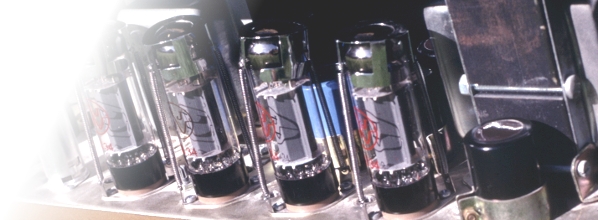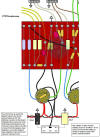V2a Cathode Switch
Here’s a cool little switch to add to your amp, that lets you select the 3 different configurations used by Marshall in the cathode for the first half of the second preamp tube, also known as the last gain stage before the cathode follower in a SuperLead or SuperBass.
Over the lifespan of the SuperLead and SuperBass amps, Marshall at various points in time (sometimes randomly) added a bypass capacitor to the 820ohm cathode resistor for V2a. The reason for this could have been tone shaping, which is the main reason you’d probably want to add this switch, but it was more likely used to block extraneous noise entering the signal path through the cathode. The two capacitor values used intermittently by Marshall were 330uF and 0.68uF. The 330uF bypass cap was used mainly before and during the transitional period of late 1967 to early 1968, whereas the 0.68uF capacitor was used mainly afterwards up to somewhere in 1969. It’s not particularly common to see the 0.68uF on the metal panel Marshalls that followed, and most definitely not the 330uF.
So what do the bypass capacitors sound like?
It’s generally thought that 0.68uF seems to add more crunch to the tone, as it sets the stage at full gain, except it starts to roll off frequencies below 285Hz.
The 330uF bypass capacitor on the other hand sets every audible frequency at full gain for the stage, thus making the tone (EQ) similar to without any bypass capacitor at all, yet thicker and slightly gainier sounding.
The best thing really though is for you to judge for yourself, and this switch lets you do that at any given time on the fly, even when the amp is on. There’s not much voltage running through the cathode so you can use just about any mini toggle switch for it to work well.
click the thumbnail to enlarge the diagram
If you use an on/off/on SPDT or DPDT switch, you will be able to select between .68uF and 330uF bypass caps, or no bypass cap at all. You can still wire this up with an on/on switch, but without the middle switch position, you will always have to have one of the two bypass caps engaged in the circuit.
Copyright © Richard Baines 2006
Related posts:




